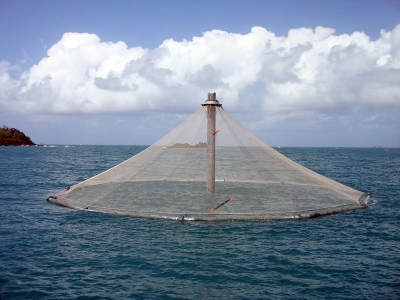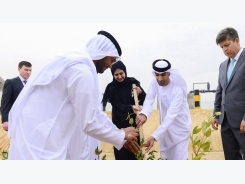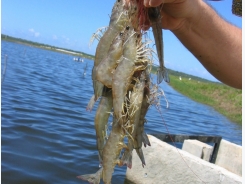Do you know offshore aquaculture when you see it?

Aquaculture researchers: Scientific community and regulators need aligned definitions, terminology
Offshore aquaculture needs to be clearly defined in order to assess its impacts and benefits, a recently released study determined.
How can anything be managed, if it cannot be defined?
For a nascent industry like offshore aquaculture – fish or shellfish farming outside of protected, near-shore conditions – clearly defining what it is, in concrete terms, could be crucial if it is to reach its potential as a solution to some of farmed seafood’s environmental impacts.
In a paper recently published in Frontiers in Marine Science, lead author Halley Froehlich, Ph.D., and her research team concluded that a deep dive into existing scientific literature on offshore aquaculture – or at least what the authors of those studies called “offshore aquaculture” – was first necessary in order to critically assess the impacts and benefits of moving fish farming operations “slightly farther and slightly deeper” out to sea.
“Offshore Aquaculture: I Know It When I See It,” sought to contextualize what the actual term means so that future analyses can be talking about the same things. Because if even scientists can’t get on the same page about what “offshore aquaculture” is supposed to be, then how can industry and governance?
“When I talk to people in fisheries, which is my background, the first question I always get is, ‘What is offshore aquaculture?’” said Froehlich, a researcher at the National Center for Ecological Analysis and Synthesis, University of California-Santa Barbara. “It kind of speaks to the reason why we selected the title that we did.”

Fig. 1: Froehlich and her team evaluated 104 peer-reviewed articles in major scientific journals in which the term “offshore aquaculture” appeared.
In a previous study that appeared in PLoS One, Froehlich, et al, discovered frequent negative perceptions in the media regarding aquaculture, particularly offshore. Those findings motivated the work on this new study, in which Froehlich and her team evaluated 104 peer-reviewed articles in major scientific journals (see Fig. 1) in which the term “offshore aquaculture” appeared. They then focused on the 70 studies that had a biological focus, or those that were linked to a specified animal or ecosystem. Of those, they found an overall lack of consistent reporting on even the most common location-focused metrics, limited impact-related studies and a narrow scope of the studies themselves.
Despite such loose connections, the researchers concluded that “depth, distance and currents” are the trifecta of factors for understanding offshore farming conditions. A farm operating in federal waters (at least 3 miles from shore, according to U.S. government regulations) is likely in depths of 30 meters or greater, where the environmental impacts of farming are diminished by swifter currents and fewer user conflicts.
You want the research that informs the policy that then informs the development – that’s the ideal chain of command.
“But we found that, on average, the distance for the farms we could find was 4.5 nautical miles from shore. And a majority of the referenced farms were much closer to shore, between 1 to 3 nautical miles, which is much closer than people may assume,” said Froehlich. “Same with depth – an average of 27 meters, well within the subtidal habitat. A lot of that has to do with money for the technology that can go out into deeper waters and withstand the conditions.”
Challenging conditions at sea and the related costs are a leading reason why offshore aquaculture activity worldwide is still quite limited. In the United States, it’s virtually non-existent, despite a management plan in place for the Gulf of Mexico, for instance.
For untapped areas like the Gulf, Froehlich believes aquaculture activity is also blocked by a chicken-and-egg kind of problem.
“You want the research that informs the policy that then informs the development – that’s the ideal chain of command. But with aquaculture, we’re finding that to actually get information, you need to have it happening in that environment. To get permits to put something in the water, it’s a lot of money and time,” she said. But without that farming activity, it’s “inherently difficult to do the science.”
Related news
Tools

Phối trộn thức ăn chăn nuôi

Pha dung dịch thủy canh

Định mức cho tôm ăn

Phối trộn phân bón NPK

Xác định tỷ lệ tôm sống

Chuyển đổi đơn vị phân bón

Xác định công suất sục khí

Chuyển đổi đơn vị tôm

Tính diện tích nhà kính

Tính thể tích ao




 What happens to feed in aquaculture systems?
What happens to feed in aquaculture systems?  Growth away from the coast: Examining inland shrimp…
Growth away from the coast: Examining inland shrimp…